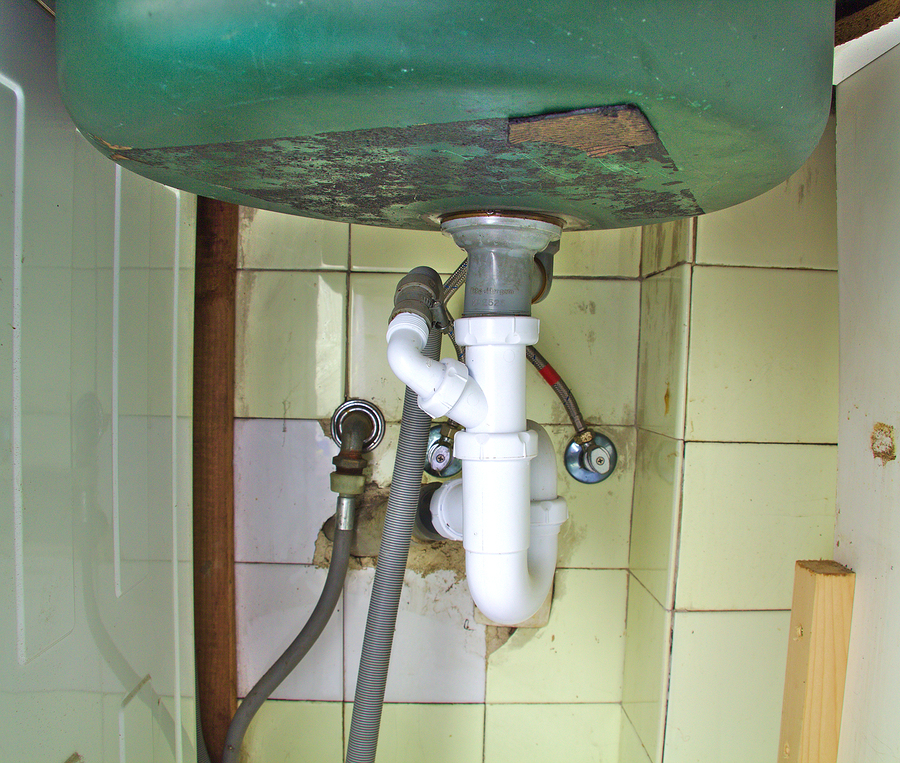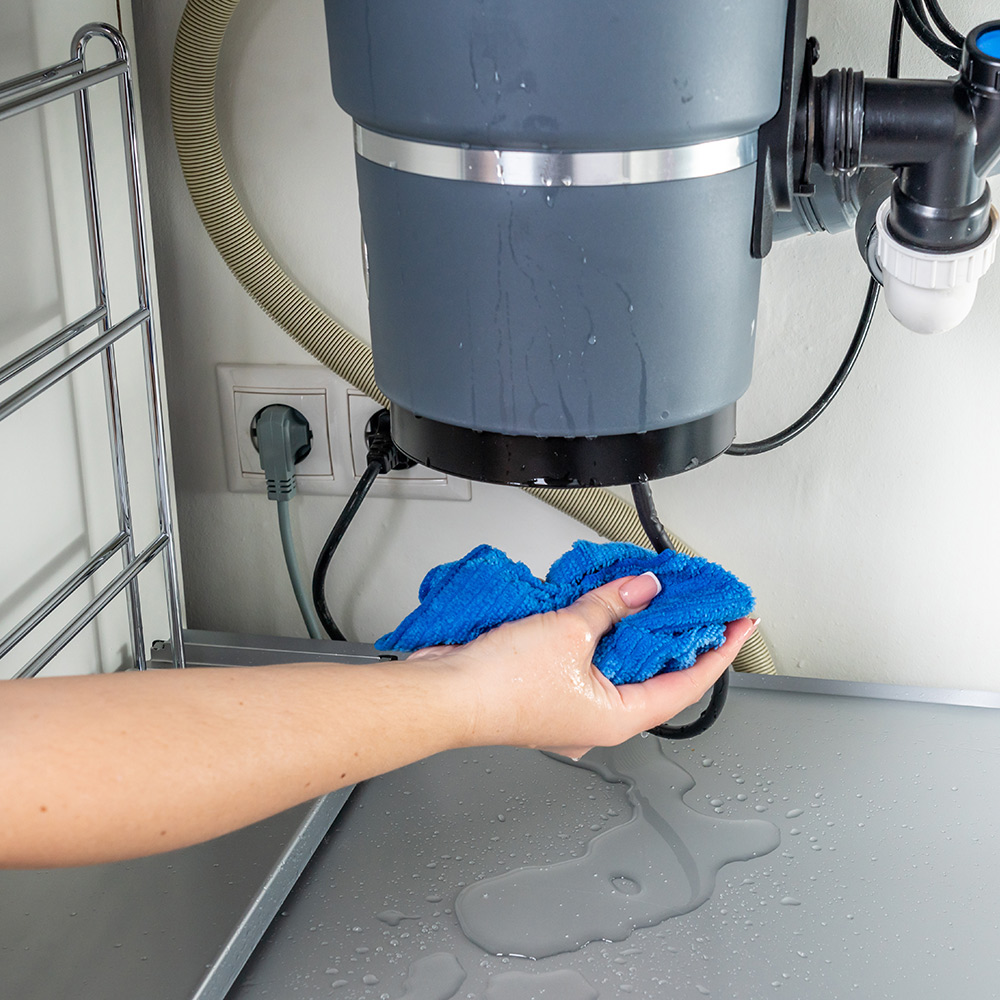Have you been interested in critical info on Why Is ?

Waste disposal unit are essential kitchen area home appliances that aid in throwing away food waste successfully. However, a leaking waste disposal unit can be an aggravating and unpleasant trouble to manage. Thankfully, numerous leakages can be fixed conveniently with a few easy actions. In this post, we will discuss exactly how to repair a dripping garbage disposal properly.
Introduction
Waste disposal unit are set up under kitchen area sinks and are developed to shred food waste into smaller pieces, enabling it to go through the plumbing system conveniently. While these gadgets are generally reliable, leakages can take place in time as a result of wear and tear, loose links, or damages to the device.
Step-by-Step Overview to Dealing With a Dripping Waste Disposal Unit
Turn Off the Power
Prior to attempting any type of repair services, ensure that the power to the waste disposal unit device is turned off to stop the danger of electric shock.
Locate the Leakage
Identify the specific location of the leakage and determine the reason
Tighten Links
Make use of a wrench to tighten any kind of loose links in between the disposal system and the pipes system.
Replace Seals or Gaskets
If the leakage results from worn seals or gaskets, eliminate the old parts and change them with brand-new ones.
Patching Cracks or Holes
For cracks or holes in the disposal unit, use epoxy or an appropriate patching product to secure the broken area.
Determining the Source of the Leakage
Prior to attempting to take care of a dripping garbage disposal, it is important to determine the source of the leakage. This can generally be done with visual inspection or by performing basic tests.
Visual Evaluation
Evaluate the waste disposal unit unit very carefully for any type of signs of water leakage. Pay close attention to areas around seals, gaskets, and connection factors.
Examining for Leaks
One way to test for leaks is by running water through the disposal system and looking for any type of noticeable indicators of leakage.
Typical Causes of Leakages in Garbage Disposals
Worn Seals and Gaskets
Seals and gaskets play an essential role in preventing water from leaking out of the garbage disposal. Gradually, these elements can wear away, bring about leakages around the disposal device.
Loose Connections
The links in between the waste disposal unit and the pipes system can become loosened in time, creating water to leak out during operation.
Fractures or Holes in the Disposal System
Physical damages to the garbage disposal, such as fractures or holes in the real estate, can likewise cause leakages.
Devices and Products Needed for Repairing a Dripping Waste Disposal Unit
Before beginning the repair process, gather the needed devices and materials, including a screwdriver, adjustable wrench, plumbing's putty, substitute seals or gaskets, and epoxy or patching product for repairing splits or openings.
Testing the Garbage Disposal After Repair
As soon as the fixing is complete, evaluate the garbage disposal by running water with it to ensure that the leakage has been dealt with.
Preventive Maintenance Tips to Avoid Future Leaks
To avoid future leaks, it is vital to perform normal upkeep on your waste disposal unit. This includes maintaining it tidy, preventing putting non-food products or tough items down the disposal, and occasionally checking for leaks or various other problems.
Final thought
In conclusion, dealing with a dripping waste disposal unit is a reasonably simple procedure that can be finished with standard tools and materials. By following the actions outlined in this post and exercising precautionary maintenance, you can maintain your waste disposal unit in good working condition and prevent costly repairs in the future.
What to Do About a Leaking Garbage Disposal
A leaking garbage disposal often goes unnoticed until you confront a sopping cabinet, a foul-smelling puddle, or an audible drip-drip-drip from the unit. The fix can be frustrating, too, because the leak can stem from a number of components in the system. Fortunately, with a little sleuthing, you can zero in on the leak and—depending on the exact location—stop the icky oozing and repair the component that caused it. Worst case scenario, if it turns out that the garbage disposal must be replaced, installing a new one is a reasonable do-it-yourself task for those with basic plumbing skills. Read on to keep the cash you’d otherwise hand over to a pro.
Prepare to find the leak
Prior to testing the garbage disposal for leaks, unplug it at the wall outlet and turn off the power from the breaker box to prevent electrical shock. Then insert a watertight sink stopper into your sink drain and wipe the unit dry with a clean cloth. In any handy container, mix a few drops of food coloring into a few cups of water, and pour the dyed water onto the sink stopper to help you locate the leak.
Investigate the source
the top, where the disposal meets the sink drain the side, where the dishwasher hose or main drain pipe connects to the disposal or the bottom of the unit Inspect each of these locations while gliding a light-colored rag over the unit; the dyed water will readily show on the rag and reveal the location of the leak. If a leak isn’t immediately apparent, remove the sink stopper and pour a few more cups of dyed water down the sink drain, then check for leaks again. Leaks near the top of the unit are more likely to show themselves while the sink is plugged, while side and bottom leaks are more noticeable while the sink is unplugged.
The metal sink flange that sits directly inside the sink drain is typically sealed around the top with plumber’s putty (a clay-like sealant) and then secured from under the sink with bolts. If the plumber’s putty deteriorates, or the bolts loosen, the flange can no longer form a watertight seal between the sink drain and the disposal—which could cause a leak at the top of the unit.
To reseal the leaky flange, you must first detach the garbage disposal. Start by loosening the screws securing the main drain pipe to the disposal, then loosen the screws in the metal clamp securing the dishwasher hose to the disposal and detach the drain pipe and dishwasher hose from the disposal. Loosen the screws in the mounting ring that connects the disposal to the metal mounting assembly beneath the sink, then pull down the disposal and carefully set it on a clean, dry surface. Loosen the bolts in the mounting assembly with a wrench, then pull down the mounting assembly and set it near the disposal.

As an enthusiastic person who reads on Why Is , I imagined sharing that chunk was beneficial. In case you enjoyed our article please do not forget to share it. Thanks a lot for your time. Come back soon.
Recurring Service Plans